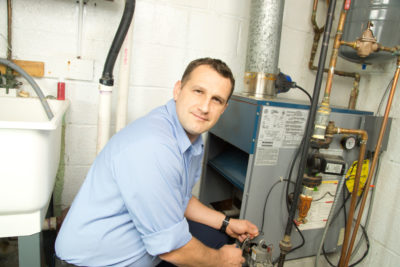BLOG
How to Choose the Best Furnace for Your Home or Office
 An old, inefficient furnace won’t make your house or business feel very warm and cozy inside. But when it’s time to replace it, what type of furnace system should you choose?
An old, inefficient furnace won’t make your house or business feel very warm and cozy inside. But when it’s time to replace it, what type of furnace system should you choose?
With confusing terms like “AFUE rating” and “modulating systems” out there, you’ll need to do your homework first. Thankfully, finding the best heater for your home or office is possible by taking these steps.
Get the right furnace size
A common mistake that many people make is buying a budget furnace that’s too small for their structure. And although an oversized furnace will keep your place well heated, you’ll waste precious fuel and money by generating more heat than you need.
To determine the perfect size, match the furnace’s heat output, measured in British thermal units (BTUs), with the square footage of your home or business— including its insulation, ceiling height, and the number of windows. If you are planning an addition soon, be sure to factor in the additional square footage.
Improve energy efficiency: look at the AFUE rating
When shopping around, you’ll also need to research the furnace’s annual fuel utilization efficiency (AFUE) rating. The higher the AFUE rating, the more efficient the furnace is. The more energy-efficient the heater is, the lower your monthly utility bills will be.
Look for a furnace with an AFUE rating of at least 80 percent. In a cooler climate like Colorado, investing in a furnace with an AFUE rating of 90 and above could save you big money in the end. To minimize heat loss, also be sure that your air duct system is intact and that your structure’s walls, windows, doors, and ceilings are well insulated.
Select your fuel source wisely
There are gas, oil, or electric-powered, forced-air furnaces. Gas is the most popular because it is more readily available, economical, and cleaner than oil. Over the last 20 years, it’s also been 30 to 50 percent cheaper on average to heat with natural gas versus oil or electricity.
Although electric furnaces are less expensive to buy and install, they cost more to operate and are less energy-efficient than gas.
Must-have features
If you want your furnace to perform optimally for many years, these upgrades are worth paying more for:
- Sealed Combustion – This feature helps protect your home from harmful carbon monoxide and improves energy efficiency.
- Two-Stage Valves – These control the fuel’s flow. With a two-stage system, the furnace will run high when first turned on, and then adjust to a lower flow to maintain the desired temperature.
- Longer Warranty – A more efficient and expensive furnace should come with the added security of a longer, more comprehensive warranty. Check the terms in both the manufacturer’s and HVAC company’s warranties, as those may differ. It’s also wise to have a longer warranty that covers the heat exchangers.
Get a high-end filter to ensure good indoor air quality
As the furnace forces air through the ductwork, dust particles and other impurities can lower your home’s inside air quality. If anyone in your household has asthma, allergies, or other breathing-related problems, your furnace should be fitted with a good quality electrostatic filter or high-efficiency, particulate-arresting (HEPA) filter.
Save money with a modulating gas furnace
If you live in an area with long, cold winters, a modulating gas furnace could save you big bucks. While these models cost more upfront than regular gas furnaces, you can adjust the heat output by increments as low as one percent. As a steady heating source, a modulating furnace lets you keep the inside temperature right where you want it.
In addition to increasing the comfort level inside your structure, being able to precisely control how much gas is used will mean lower utility bills in the end.
Choose within your budget
There are a lot of furnace options out there, so don’t let the cost of the actual furnace unit totally influence your purchasing decision. Instead, factor in additional costs like installation, fuel, maintenance, repairs, the product’s life expectancy, and then estimate how all those metrics will impact your household budget over time.
Plan ahead
And finally, don’t wait until your old furnace breaks down in the dead of winter, leaving you cold and frustrated while scrambling to find a replacement. If your furnace is over 20 years old, do your research now so you can find the best deal on a new energy-efficient furnace later.
Installation prices can vary by contractor, so be sure to shop around. If you live in a temperate climate, schedule your install during the summer months when HVAC companies are less busy and more likely to give you a price break.
The best time to find the right furnace for your home or office is before your old unit conks out in the dead of winter, not after. At Northern Climate Control, we are a residential and commercial HVAC company that sells, services, and installs all makes and models of heating and air conditioning products— including high-efficiency furnaces. Located in Littleton, we’ve been serving the entire Denver Metro Area since 2003.



